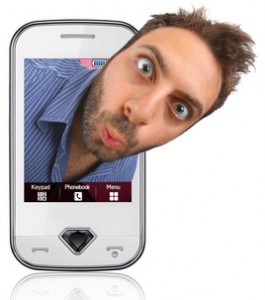 On a recent 4 hour bus journey, I was fascinated whilst casually watching a passenger in front of me on her mobile phone. She was sitting with a ‘real’ friend next to her and was not of a juvenile age group. What amazed me was that she spent the whole 4 hour journey (no exaggeration) typing on her phone’s small keypad communicating with ‘virtual’ friends on Facebook and on the phone’s text messaging system. This included taking pictures of the scenery out the bus window and forwarding them on.
On a recent 4 hour bus journey, I was fascinated whilst casually watching a passenger in front of me on her mobile phone. She was sitting with a ‘real’ friend next to her and was not of a juvenile age group. What amazed me was that she spent the whole 4 hour journey (no exaggeration) typing on her phone’s small keypad communicating with ‘virtual’ friends on Facebook and on the phone’s text messaging system. This included taking pictures of the scenery out the bus window and forwarding them on.
Don’t get me wrong, I’m no technophobe and realise that social media is playing a big role in people’s lives these days, but it was perfectly obvious to me that this person lived a virtual life almost all of the time! Her ‘real’ friend sitting next to her was relegated to staring out the window most of the time, but was occasionally invited to check out a witty comment sent by one of her companion’s virtual friends. The insanity of this is that it shows how we are slowly losing the ability to communicate in any traditional, ie personal form. The new ‘normal’ is becoming the social media way.
So what? I hear you all ask. Well, aside from the implications for “real” social skills, all of the virtual lives that we are leading are at the cost of our bodies interacting with computers, phones, and other hand held mobile devices nearly all of the time! Which means we are clicking them and using small repetitive micro movements in doing so. I really fear that our virtual lifestyles will lead to a guarantee of an epidemic in RSI type conditions, and the debilitating pain that goes with them.
Is it not about time that we questioned the importance and necessity of our virtual lives against the necessity that we will have a healthy future in which we will be able to do perform our work as well as successfully interact with real people?
Rate this post! [ratings]
 Just came across an old
Just came across an old